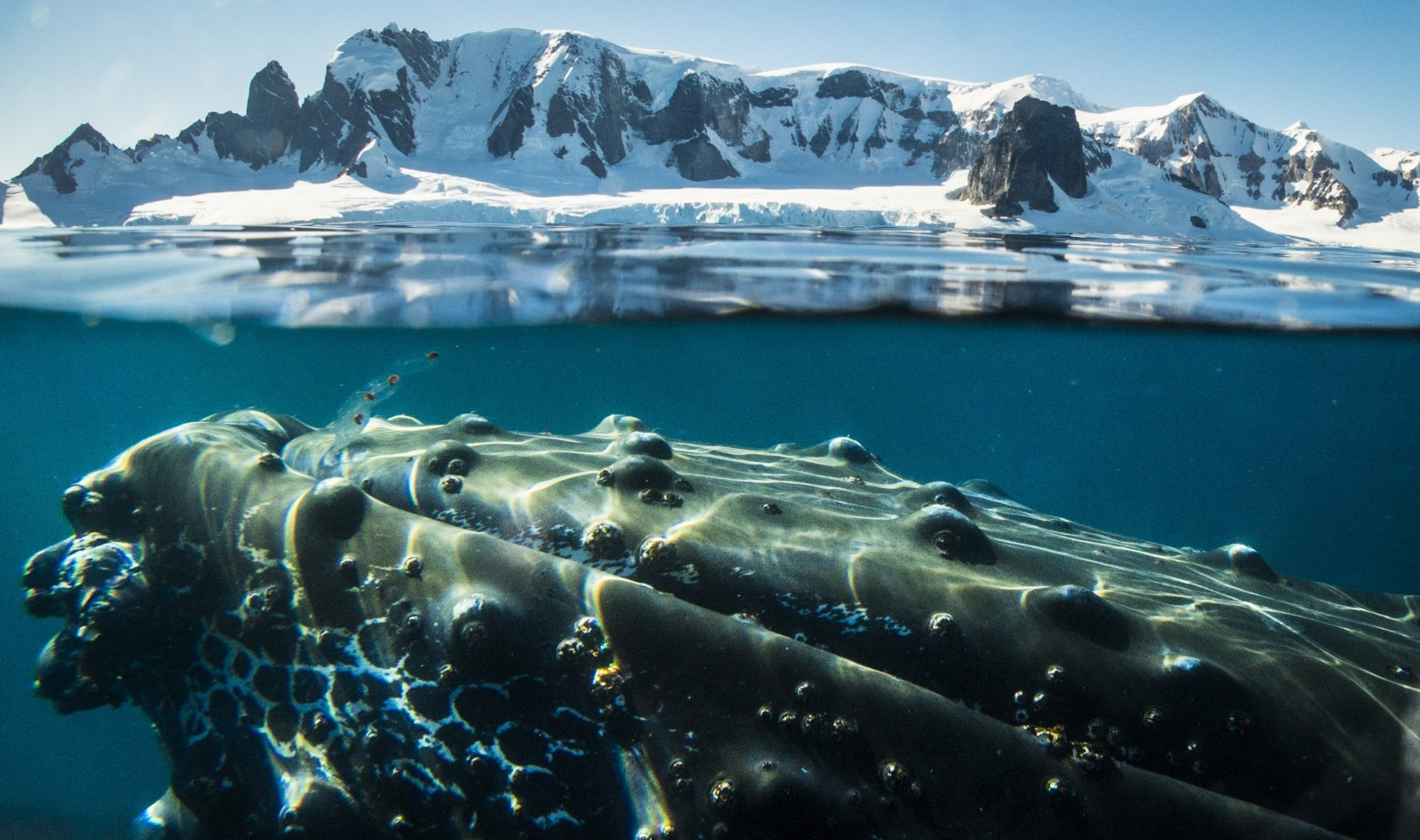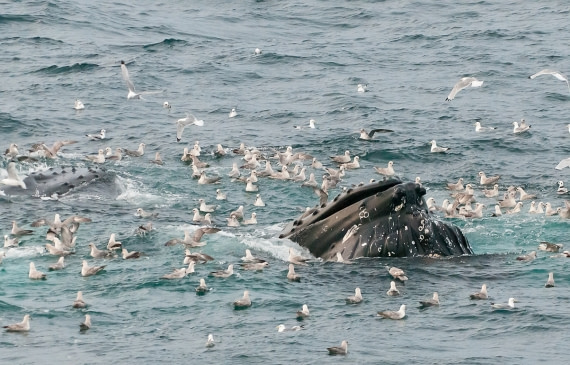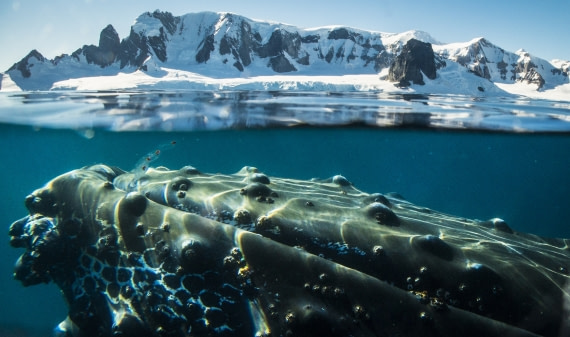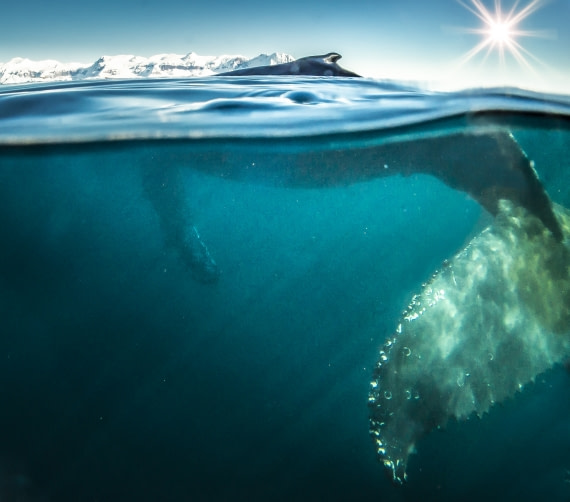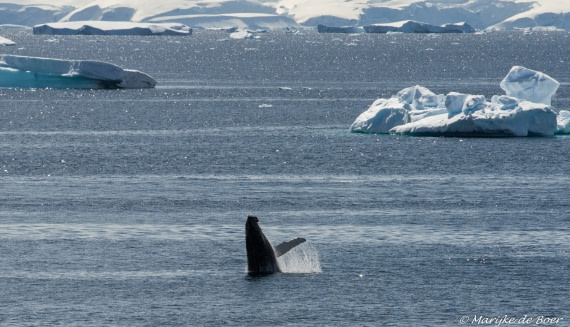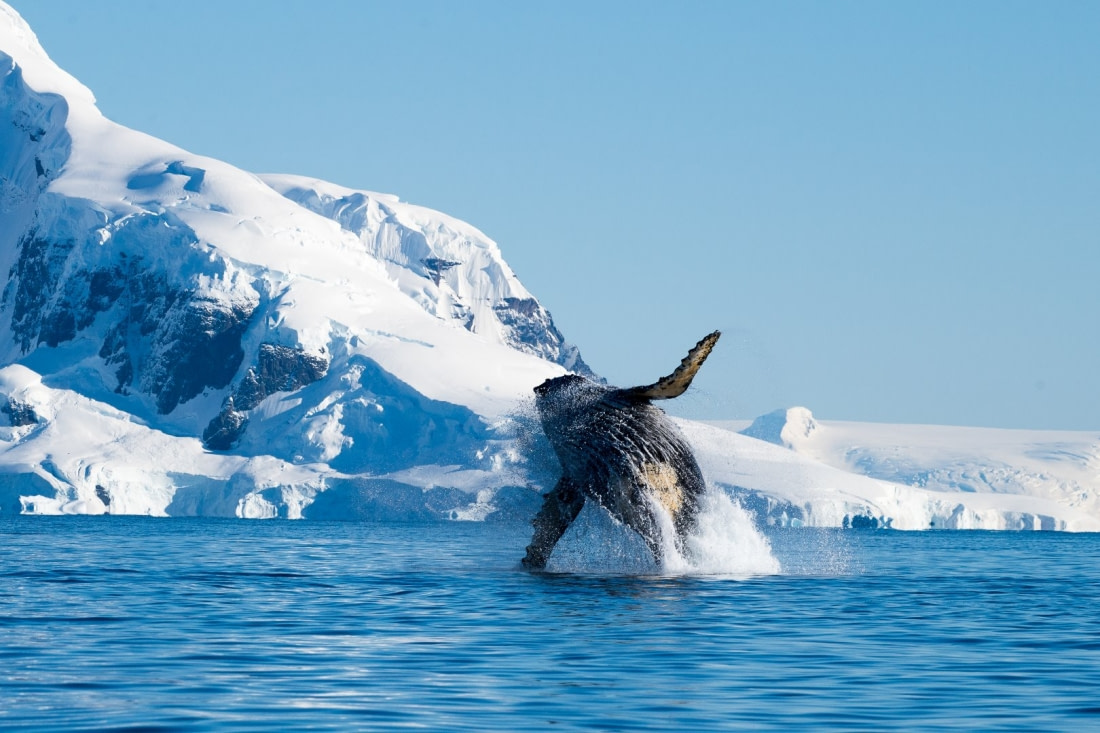Name: Humpback Whale (Megaptera novaeangliae)
Length: 12-19 metres
Weight: 36,000 kg
Location: Worldwide
Conservation status: Least Concern
Diet: Krill, other plankton, small fish
Appearance: Black or gray, lighter on undersides.
How do Humpback Whales feed?
Humpback Whales belong to the family of baleen wheels, which have a series of curtain-like filters in their mouths instead of teeth. Moving through clouds of krill or schools of smaller-sized fish, they suck in large amounts of water, then push the water back out through their baleens, trapping the krill inside. Sometimes Humpbacks will slap the surface of the water with their flukes or pectoral fins in order to stun prey with the shockwave.

Humpbacks are also very good pack hunters. When a pod is on the hunt, some members will blow air bubbles around a school of feeder fish, trapping them in a rough cylinder. Other members will continue to gather more fish into the cylinder, while yet another group of pod members will circle below, making sure no fish escape from the bottom. Once the cylinder has been compacted enough the whales will swim up its length, gulping in the feeder fish. Humpbacks will usually do all of their feeding in the summer months, living for the most part off of their reserves of fat during the winter.
Are Humpback Whales social?
Humpback Whales are generally loners; coming together occasionally to feed or mate. On the other hand, Humpbacks are regarded as being quite friendly towards other types of marine life, having been spotted socializing with other kinds of whales and dolphins.
How fast can Humpback Whales swim?
When travelling, Humpback Whales move at about 5 to 15 km per hour. During feeding, they’ll slow to 2 to 5.5 km/h. When they want to really move they can speed up to about 25 km/h.

How deep can Humpback Whales dive?
Humpbacks dive to about 200 m. They can stay underwater for 30 minutes, but on average their dives only last about 15 minutes.
What are Humpback Whale mating rituals like?
Females reach sexual maturity at 5 years of age; males mature at 7. Males gather into groups in order to fight for dominance. These battles can include charging, breaching, “spy-hopping” (when whales float with their heads above water), and lob-tailing (slapping the water with their flukes to create a large sound). Mating occurs in the tropics during the winter months after the Humpbacks have migrated away from the summer feeding areas. The pregnancy lasts about 11 months. A Humpback calf weighs about 900 kg at birth and is about 3 to 4.5 metres long. The calves drink about 45 kg of its mother’s milk a day until they’re weaned 6 or so months later.
How long do Humpback Whales live?
Humpback Whales on average live about 50 years, although there have been indications of much longer lifespans in the species – as much as 100 years in rare cases.
How many Humpback Whales are there today?
There are an estimated 80,000 Humpback Whales alive today, breaking down in population as:
- 20,000 in the North Pacific
- 12,000 in the North Atlantic
- 50,000+ in the Southern Hemisphere
Do they have any predators?
The only predators Humpback Whales have faced aside from man are thought to be Killer Whales. While no such attacks have been witnessed, scientists believe the scarring seen on some Humpbacks’ hides is the result from Killer Whale attacks.
What do Humpback Whale songs mean?
Humpbacks and other whales sing by forcing air through their nasal cavities. While both males and females sing, only the males sing the especially long songs that can typically last for up to 20 minutes, made up of a wide variety of low tones. Some Humpbacks have been known to sing non-stop for over 24 hours. Scientists aren’t sure what the songs (and clicks, grunts, and other noises) mean specifically, whether it’s to woo females, challenge males, or if they serve as a form of echolocation to find food.

7 Wonderful Humpback Whale Facts
- The Humpback’s Latin designation Megaptera novaeangliae translates “the great winged newfoundlander,” indicating the whale’s huge wing-like flippers.
- Barnacles form on the Humpback’s body, giving them their bearded appearance.
- Humpbacks make a long migration twice every year. They travel to cooler polar water in summers to feed, then to warmer tropical waters in the winter to breed.
- A Humpback’s song can be heard from as far as almost 20 km away.
- A Humpback’s spouting can reach as high as 3 metres and can be heard as far as 245 metres away.
- When getting ready to make a deep dive Humpbacks will arch or hump their backs, which is how they earned their everyday name.
- A Humpback Whale’s heart can reach almost 200 kg in weight – the equivalent of 3 fully grown men.
